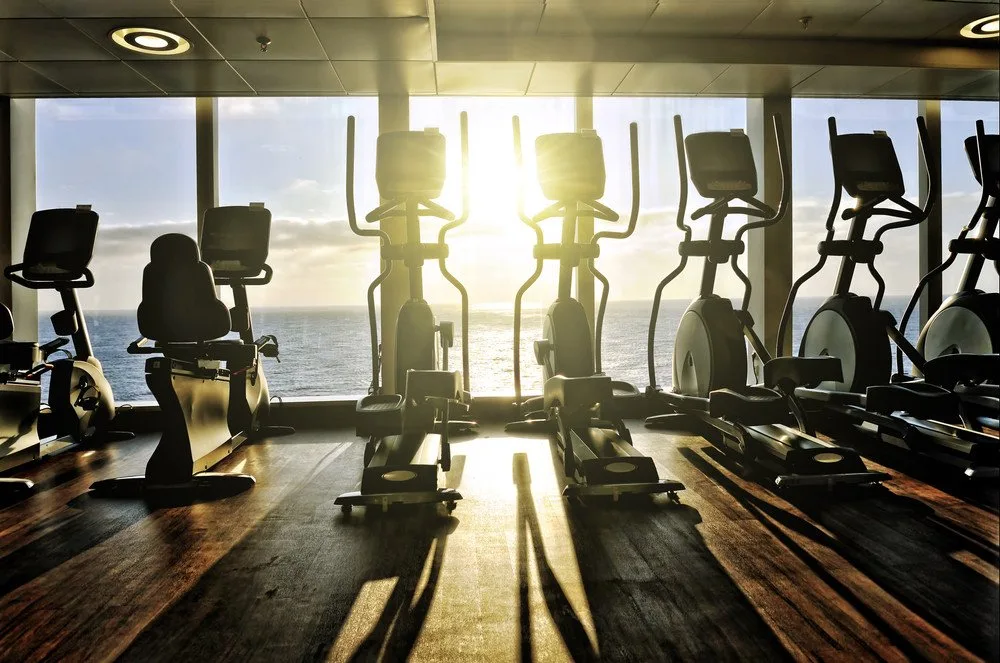Across the world, gym lovers are looking forward to their gradual return to their facilities. In different countries, the stringent stay-at-home restrictions put in place to combat COVID-19 are slowly being lifted. Restaurants, parts of the travel industry, and yes, gyms, are in the process of reopening. But following all the global changes that came with the restrictions, eager gym goers will likely be returning to a setup that looks very different from what they remember.
There’s also a measure of uncertainty around whether it will, in fact, be safe to head back to the combination of spinning rooms, weight sections, and public bathrooms. And for good reason. After all, the gym tends to be a place where bacteria like to congregate. According to a study published in the National Library of Medicine, about 25% of surfaces tested in four different athletic training facilities (or gyms) featured a variety of germs. It included various pathogens, the flu virus, and other drug-resistant bacteria. On top of that, experts are warning of the coming of a second wave of coronavirus if restrictions are lifted too early. All in all, it’s safe to say that while you may be eagerly anticipating your next spin class, it’s best to approach the gym with caution.
In light of the lifting of restrictions for several public spaces, various medical professionals and organizations have released important safety advice regarding how to return to the gym. For your own safety and that of the surrounding people, it’s important to understand how to adapt to the new environment.
1. Find out more about your gym’s new policies 
Depending on with whom your gym membership is, you will probably be receiving some of this information a while before the reopening of their doors. The Mayo Clinic recommends calling ahead and finding out whether they have implemented a limit on how many members are allowed at once. Make sure you are familiar with their guidelines on matters like social distancing. This way, you can follow them safely.
Also, check the following aspects with the gym staff:
- will members be required to book times to exercise?
- what are their cleaning and disinfectant policies?
- will members be able to use the locker room and bathroom safely?
If you used to attend group classes, ask about whether they will still be offered. If so, find out how many people will be allowed in a group, so you can plan accordingly.
2. Practice good hygiene with the available equipment
It’s important that we realize there is a risk involved in going back to the gym. This is because much of the way we exercise has to do with touch, particularly if weights, rollers, mats, or stationary bikes are involved. However, embracing a touchless 24 hour gym access system, such as biometric entry or mobile app-based check-ins, can help minimize contact points and enhance safety for gym-goers. Gym equipment can be difficult to clean properly, and this can increase your risk of getting infected. Implementing hygiene practices can help to reduce this, but it’s hard to eliminate completely.
Make sure your hands are clean before entering the gym. Try to avoid touching anything when you sign in, as this is where a lot of germs can collect. If your gym does not provide it for members, it may help to carry a disinfectant with you. That way, you can clean any equipment after you’ve used it. Use your own water bottle, and try to avoid the drinking fountain.
3. Keep a safe distance as much as is possible
It’s likely that your gym will have changed the setup so that users will be able to use the available equipment while remaining the recommended 6 feet (1.83 m) away from one another. Speaking to The New York Times, Dr. Deverick Anderson said that stationary bikes, treadmills, and elliptical machines can be taped off, removed from service, or moved apart to enable social distancing. Dr. Anderson is a professor of medicine and the director of the Duke Center for Antimicrobial Stewardship and Infection Prevention at Duke University Medical Center in Durham, N.C.
In the interest of keeping members a safe distance from one another, it’s important that your gym has good ventilation. When we exercise, heavy breathing produces lots of respiratory droplets. These can remain on the surfaces of the gym even after our session has ended. Dr. Blocken from the Eindhoven University of Technology in the Netherlands and KU Leuven in Belgium, recommends that the gym be well-ventilated. It should also preferably use a system that constantly refreshes the inside air with filtered air from outside. Otherwise, wide-open doors on both sides of the room should provide adequate ventilation.
The Mayo Clinic recommends that if you are at risk of illness, you wait before going back to the gym. Instead, opt for virtual classes if they are available, or make use of YouTube classes online. If you are showing any symptoms of the virus, self-isolate and rest for at least two weeks before considering going to the gym again.
4. Plan your workouts
Considering you’ll probably need to book out a gym session, you need to structure your day so that you can optimize your fitness. Even with the limitations, you might now be subject to. The benefits of working out on a physical and mental level are worth it.
Want to know more?
Find out how you can get your best workout even when you don’t feel like it.
References:
https://www.mayoclinic.org/diseases-conditions/coronavirus/in-depth/coronavirus-safety-tips/art-20485967







![women [longevity live]](https://longevitylive.com/wp-content/uploads/2020/01/photo-of-women-walking-down-the-street-1116984-100x100.jpg)









